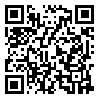BibTeX | RIS | EndNote | Medlars | ProCite | Reference Manager | RefWorks
Send citation to:
URL: http://tkj.ssu.ac.ir/article-1-706-en.html
Introduction: In every time and place, accidents can cause damages or injuries to people, property, community and organization reputation. With respect to this point that accidents occurred in laboratories of our country, this study aimed to assess the hazards in laboratories and workshops of Isfahan University of Art and also the implementation of interventions to increase the safety level in these places.
Methods: This is a cross-sectional study. After initial evaluation of all workshops and laboratories of the Isfahan University of Art, 4 workshops and laboratories with high potential level of hazards were selected for further study. Then, for quantitative assessment of hazards made a 130-question assessment checklist was prepared based on OHSAS 18001. After performing quantitative assessment of hazards and prioritizing them based on the results of this evaluation, interventions were implemented to decrease hazards and increase the safety level. Finally, quantitative assessment repeated and efficacy of interventions has been identified.
Results: Based on the quantitative assessment according to evaluation checklist score, the percentage of general hazards in target sites was 20.8 to 45.4 % (Mean = 35.5, SD=9.2). Lack of safety supplies, equipment and signs with 31% and deficiency of safety procedure with 26 % were the most important factors corresponding to evaluated safety risk levels. Two interventions were implemented, including designing and installing safety signs and safety training.
Conclusion: After the educational and safety interventions, total hazards decreased from range of (%20.8 - %45.4) to range of (%15.4 - %32.3). According to the low cost of the implementing the interventions, the mean overall safety level is decreased (10.6%) thus increasing the safety level is acceptable.
Received: 2015/12/10 | Accepted: 2016/10/24 | Published: 2017/02/15
| Rights and permissions | |
 |
This work is licensed under a Creative Commons Attribution-NonCommercial 4.0 International License. |





